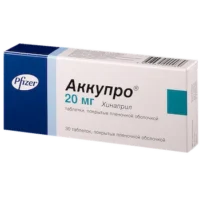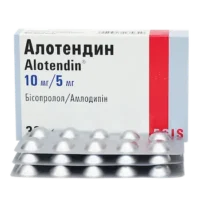Description
Trombonet (Clopidogrel) Coated Tablets 0.075 g. №30
Ingredients
Active ingredient: Clopidogrel 0.075 g.
Other ingredients: Microcrystalline cellulose, lactose monohydrate, colloidal silicon dioxide, croscarmellose sodium, magnesium stearate, hypromellose, macrogol 6000.
Dosage
Recommended dosage: 1 tablet daily, or as directed by a healthcare professional.
Swallow the tablet whole with a glass of water, with or without food.
Indications
Trombonet (Clopidogrel) coated tablets are indicated for the prevention of atherothrombotic events in patients with a history of recent myocardial infarction, recent stroke, or established peripheral arterial disease.
Contraindications
Do not use Trombonet (Clopidogrel) coated tablets if:
- You are allergic to clopidogrel or any other ingredients in the product.
- You have an active pathological bleeding such as peptic ulcer or intracranial hemorrhage.
- You are pregnant or breastfeeding without consulting a healthcare provider.
Directions
Take Trombonet (Clopidogrel) coated tablets exactly as prescribed by your doctor. Do not change the dosage or stop taking the medication without consulting your healthcare provider.
Scientific Evidence
Clopidogrel is a widely studied antiplatelet medication that has shown significant efficacy in reducing the risk of cardiovascular events. Research studies such as the CAPRIE trial have demonstrated the superiority of clopidogrel over aspirin in preventing atherothrombotic events in high-risk patients.
Additional Information
It is important to inform your healthcare provider about all medications, supplements, and medical conditions before starting Trombonet (Clopidogrel) coated tablets. Regular monitoring of platelet function may be necessary during treatment to ensure optimal therapeutic outcomes.
Pharmacological Effects
Clopidogrel works by irreversibly binding to the P2Y12 receptor on platelets, inhibiting platelet aggregation and reducing the risk of clot formation. This antiplatelet action is crucial in preventing thrombotic events in patients with cardiovascular diseases.
Clinical Trials and Comparative Effectiveness
Clinical trials have shown that clopidogrel is more effective than aspirin in reducing the risk of cardiovascular events in patients with a history of myocardial infarction or stroke. Additionally, compared to other antiplatelet agents, clopidogrel has demonstrated a favorable safety profile and tolerability.





